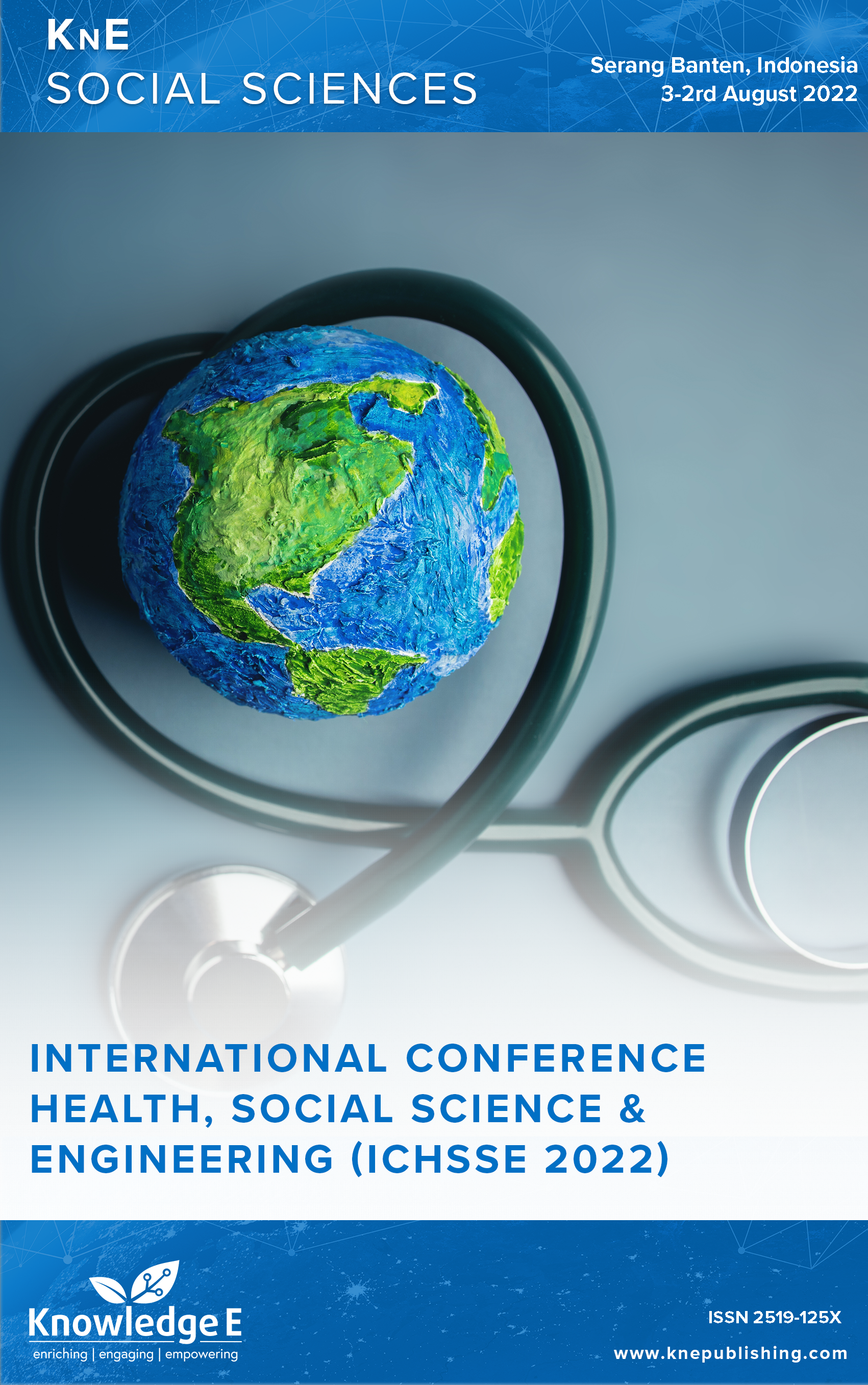Effectiveness of Household Landslide Preparedness Education on the Preparedness Capacity of Families
DOI:
https://doi.org/10.18502/kss.v8i14.13848Abstract
Disasters are events that threaten and disrupt people’s lives and livelihoods due to natural and/or non-natural factors as well as human factors that cause human casualties, environmental damage, property losses, and psychological. The implementation of disaster preparedness has not been carried out comprehensively and continuously throughout Indonesia. This study aimed to determine the effectiveness of landslide preparedness education interventions in increasing the landslide preparedness capacity of households in the Sukabumi Regency. The minimum sample was 118 for each intervention and control group. Random sampling was used for sampling technique. Data analysis was done using an independent t-test. The results of the study mean that the difference in knowledge scores showed a significant difference between the intervention group and the control group (F = 23.41, p-value = 0.000). In addition, the average difference in household preparedness scores for landslides showed a significant difference between the intervention and control groups (F = 190.08, p-value = 0.000). After the intervention, the intervention group’s household disaster preparedness improved significantly. Meanwhile, no significant increase was observed in the control group’s household disaster preparedness score after the intervention. Household disaster preparedness training may have an impact on the knowledge, attitudes, and behavior of individuals and families. Trainings such as online and simulation using live or recorded demonstrations should be developed and evaluated for their effectiveness.
Keywords: household landslide preparedness, education, preparedness capacity
References
[2] Center for R. on the E. of CRED. “Natural Disasaters 2018,” in Natural Disasaters, 2018.
[3] BNPB, “Data Informasi Bencana Indonesia,” Data Informasi Bencana Indonesiawww. bnpb.cloud, 2020. .
[4] UNDRR. Monitoring the Implementation of Sendai Framework for Disaster Risk Reduction 2015-2030: A snapshot of reporting for 2018. United Nations Off. Disaster Risk Reduct; 2020. pp. 1–33.
[5] UNDRR. “United Nations Office for Disaster Risk Reduction.” 2019. p. 472.
[6] Nakamura H, Umeki H, Kato T. Importance of communication and knowledge of disasters in community-based disaster-prevention meetings. Saf Sci. 2016. https://doi.org/10.1016/j.ssci.2016.08.024
[7] Anantasari E, Daly M, Glassey P, Grace E, Coomer M. Disaster risk reduction (DRR). Capacity and Capability of Local Government in Indonesia; 2017. https://doi.org/10.1007/978-3-319-54466-3.
[8] Wang Z, Han Z, Liu L, Yu S. Place attachment and household disaster preparedness: Examining the mediation role of self-efficacy. Int J Environ Res Public Health. 2021 May;18(11):5565.
[9] Chen IH, Chang SC, Feng JY, Lin SJ, Chen LC, Lee CL, et al. Nurse participation in continuing education in disaster nursing in Taiwan. J Emerg Nurs. 2017 May;43(3):197–201.
[10] BPBD Kabupaten Sukabumi, “Badan Penanggulangan Bencana Daerah Kabupaten Sukabumi,” 2020.
[11] Bhide A, Shah PS, Acharya G. A simplified guide to randomized controlled trials. Acta Obstet Gynecol Scand. 2018 Apr;97(4):380–387.
[12] Van de Velde S, Heselmans A, Roex A, Vandekerckhove P, Ramaekers D, Aertgeerts B. Effectiveness of nonresuscitative first aid training in laypersons: A systematic review. Ann Emerg Med. 2009 Sep;54(3):447–457.
[13] McCabe OL, Semon NL, Lating JM, Everly GS Jr, Perry CJ, Moore SS, et al. An academic-government-faith partnership to build disaster mental health preparedness and community resilience. Public Health Rep. 2014;129(Suppl 4 Suppl 4):96–106.
[14] Najafi M, Ardalan A, Akbarisari A, Noorbala AA, Elmi H. Salient public beliefs underlying disaster preparedness behaviors: A theory-based qualitative study. Prehosp Disaster Med. 2017 Apr;32(2):124–133.
[15] Najafi Ghezeljeh T, Mohammad Aliha J, Haghani H, Javadi N. Effect of education using the virtual social network on the knowledge and attitude of emergency nurses of disaster preparedness: A quasi-experiment study. Nurse Educ Today. 2019 Feb;73:88–93.

